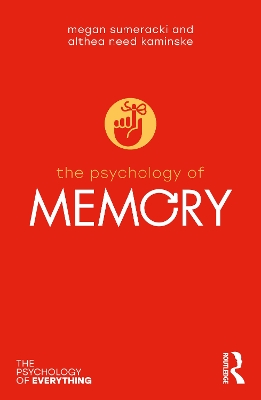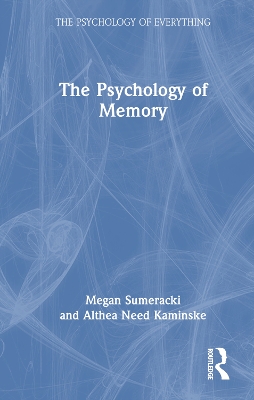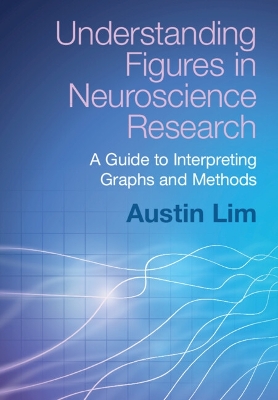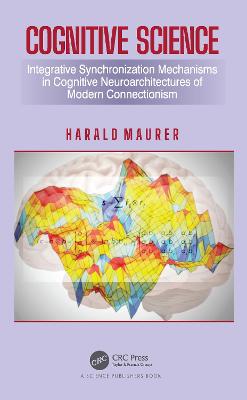Where Does Violence Come From?
 portes grátis
portes grátis
Where Does Violence Come From?
A Multidimensional Approach to Its Causes and Manifestations
Bogerts, Bernhard
Springer Nature Switzerland AG
11/2021
222
Mole
Inglês
9783030817916
15 a 20 dias
373
1. introduction
2. forms of violence o Classification into single perpetrator or group violenceo Classification according to cause and motivation
3. occurrence, frequency and consequences of violence o Dimensions of violence in global comparisono Violence in Germanyo Violence in partnershipso Child abuseo Psychological and economic long-term consequences of violenceo Current situation in historical comparison
4 Why does the tendency to violence belong to human characteristics?o Aggression and violence as a result of evolution of mankindo Variation of traits by gene selectiono Phylogenesis as the basis of violent tendency and prosocial behavior o Why did prehumans and early humans disappear?o Decrease of violence with increasing civilization ?o Phylogenesis of pro-social behaviors that inhibit violence
5. heritability of aggressive behavioro Importance of genes for behavioro Interaction of genes and environment - epigeneticso How strong is the influence of genes? Twin and family researcho Which genes play a role?o What do genes do in the brain?o Can gene analyses predict dangerous behavior?o Prosocial behavior is also subject to genetic influenceso Genes and the future of our behavior
6 Neurobiology of violenceo Brain anatomical and brain physiological basicso Evidence of "aggression centers" in the braino Regulation and control of "centers of aggression" in the braino Phylogenetic tripartition of brain structure and function: concept of the limbic systemo Stages of information flow through the braino Connection between violence and reward centerso Neurobiology of prosocial behavioro Brain biological basis of ethics and morality?o Brain activity during empathyo Compassion can be trained
7. brain structure and brain dysfunction of violent offenderso Examination of the brain with imaging techniques o Causes of brain structure and function deficitso Historical cases - prominent exampleso Brain pathological findings in incarcerated violent offenders.
8 Significance of hormones and neurotransmitters of the braino Testosteroneo Ocytocino Stress hormone cortisolo serotonin
9. gender difference of the tendency to violenceo Phylogenetic causeso Brain biological correlates
10. mental disorders and propensity to violenceo General risk of violence of mental disorders o Schizophrenic and psychotic disorderso Depressive disorderso Bipolar diseaseso Attention deficit hyperactivity disorder (ADHD)o Brain-organic psychosyndromeso Post-traumatic stress disorderso Borderline personality disordero Dissocial / antisocial personality disordero Psychopathy ("psychopathy")o Narcissistic and histrionic personality disorderso Paranoid personality disorders - fanaticso Pathological irascibility - rage syndrome - choleric personality disorder o What is the risk of violence due to personality disorders?
11 Alcohol, drugs and violenceo Addiction as a cause and consequence of violenceo Frequency of violence under the influence of alcohol o Effects of alcohol in the braino Effects of drugso Drug terror
12 Psychology of violenceo Historical attempts to explain violenceo Drive theories of Freud and Lorenzo Frustration theory and learning theoryo Violence - a product of civilization? o Violence only as a reaction to injustice or degradation?o Banality of evilo New psychological theories of aggressiono The dark tetrad of personality
13 Violence as an end in itself and for pleasureo Current and historical exampleso Torture and sadismo Sadistic serial killerso Revengeo Collective violence as intoxicationo Hedonistic violence as a relic of tribal historyo Brain biological correlates of hedonistic aggression
14 Social causes of violenceo Historical and geographical variations in the incidence of violenceo Importance of the state monopoly on violence in containing violenceo Flip sides of the state monopoly on violenceo Police violenceo Economic conditions and violenceo Social attitudes towards violenceo Classification of violence according to Reemtsmao Anomie and disintegration as causes of violenceo Interaction of social, biographical and neurobiological conditions
15 Violence in children and adolescents - early risk factorso Neurobiology of the maturing braino Incidence and frequencyo Are violent acts in children and adolescents on the rise?o Causes of aggression and tendency to violence in childhood and adolescenceo New media and the risk of violence among adolescentso Predictability of future violence among children and adolescents?o Extremist attitudes among adolescents
16 Amok and school shooting o Difference between amok and terroro Frequency of rampages in Germany o Frequency of rampages in the USAo School shootings worldwideo School-shootings in Germanyo Who becomes a spree killer?o Measures for the prevention of rampages at schoolso EarlyWarning symptoms - "Leaking"o Warning symptoms in adult spree killerso Which brain functions are damaged in spree killers?o Amoktaten in the preliminary stage of schizophrenic diseaseso Future risk of amoktats
17. terroro What is terror?o Historical background and current developmentso Increasing importance of the Interneto Is terrorism on the rise?o Who becomes a terrorist?o Mental illness in individual caseso Psychology and sociology of group terroristso Left-wing terrorismo Right-wing terrorismo Right-wing terrorism as a predominantly male phenomenono Islamist terrorismo Peculiarities of Salafist terrorismo Common characteristics of terrorist groupso Characteristics of individual terroristso Brain structure and brain function of terroristso Confluence of personality traits and environment in terrorists
18 Collective violence, xenophobia, pogroms, genocideo Collective violence as a legacy of evolutiono Similarities between humans and animalso Historical dimensions of collective violenceo Risk factors for wars and genocideso Social science studies on the emergence of group hatred o Group violence as a male domaino Disinhibition mechanisms - behavior in waro Disinhibition as a mass psychological phenomenon o Brain biological correlates of group aggression and racism o Getting to know against prejudices
19 Sexual violenceo Definitiono Frequencyo Types of perpetratorso War and sexual violenceo Phylogenetic aspects
20 Religion and violenceo Common characteristics of the major religionso Violence in the name of religionso Islamo Christianityo Judaismo Buddhism and Hinduismo Sectso Psychological and sociological explanatory models for the connection between religion and violenceo Neuroscientific explanatory models for the connection between religion and violenceo Religious phenomena and violence in brain disorderso Limits of knowledge
21. conclusions for the prediction and prevention of violence o Limits of predictability of individual violence o Predictability of collective violence o Phylogenetic disposition to individual and collective violence remains unchanged o Current starting point for violence preventiono Prevention projectso Concluding remarks
1. introduction
2. forms of violence o Classification into single perpetrator or group violenceo Classification according to cause and motivation
3. occurrence, frequency and consequences of violence o Dimensions of violence in global comparisono Violence in Germanyo Violence in partnershipso Child abuseo Psychological and economic long-term consequences of violenceo Current situation in historical comparison
4 Why does the tendency to violence belong to human characteristics?o Aggression and violence as a result of evolution of mankindo Variation of traits by gene selectiono Phylogenesis as the basis of violent tendency and prosocial behavior o Why did prehumans and early humans disappear?o Decrease of violence with increasing civilization ?o Phylogenesis of pro-social behaviors that inhibit violence
5. heritability of aggressive behavioro Importance of genes for behavioro Interaction of genes and environment - epigeneticso How strong is the influence of genes? Twin and family researcho Which genes play a role?o What do genes do in the brain?o Can gene analyses predict dangerous behavior?o Prosocial behavior is also subject to genetic influenceso Genes and the future of our behavior
6 Neurobiology of violenceo Brain anatomical and brain physiological basicso Evidence of "aggression centers" in the braino Regulation and control of "centers of aggression" in the braino Phylogenetic tripartition of brain structure and function: concept of the limbic systemo Stages of information flow through the braino Connection between violence and reward centerso Neurobiology of prosocial behavioro Brain biological basis of ethics and morality?o Brain activity during empathyo Compassion can be trained
7. brain structure and brain dysfunction of violent offenderso Examination of the brain with imaging techniques o Causes of brain structure and function deficitso Historical cases - prominent exampleso Brain pathological findings in incarcerated violent offenders.
8 Significance of hormones and neurotransmitters of the braino Testosteroneo Ocytocino Stress hormone cortisolo serotonin
9. gender difference of the tendency to violenceo Phylogenetic causeso Brain biological correlates
10. mental disorders and propensity to violenceo General risk of violence of mental disorders o Schizophrenic and psychotic disorderso Depressive disorderso Bipolar diseaseso Attention deficit hyperactivity disorder (ADHD)o Brain-organic psychosyndromeso Post-traumatic stress disorderso Borderline personality disordero Dissocial / antisocial personality disordero Psychopathy ("psychopathy")o Narcissistic and histrionic personality disorderso Paranoid personality disorders - fanaticso Pathological irascibility - rage syndrome - choleric personality disorder o What is the risk of violence due to personality disorders?
11 Alcohol, drugs and violenceo Addiction as a cause and consequence of violenceo Frequency of violence under the influence of alcohol o Effects of alcohol in the braino Effects of drugso Drug terror
12 Psychology of violenceo Historical attempts to explain violenceo Drive theories of Freud and Lorenzo Frustration theory and learning theoryo Violence - a product of civilization? o Violence only as a reaction to injustice or degradation?o Banality of evilo New psychological theories of aggressiono The dark tetrad of personality
13 Violence as an end in itself and for pleasureo Current and historical exampleso Torture and sadismo Sadistic serial killerso Revengeo Collective violence as intoxicationo Hedonistic violence as a relic of tribal historyo Brain biological correlates of hedonistic aggression
14 Social causes of violenceo Historical and geographical variations in the incidence of violenceo Importance of the state monopoly on violence in containing violenceo Flip sides of the state monopoly on violenceo Police violenceo Economic conditions and violenceo Social attitudes towards violenceo Classification of violence according to Reemtsmao Anomie and disintegration as causes of violenceo Interaction of social, biographical and neurobiological conditions
15 Violence in children and adolescents - early risk factorso Neurobiology of the maturing braino Incidence and frequencyo Are violent acts in children and adolescents on the rise?o Causes of aggression and tendency to violence in childhood and adolescenceo New media and the risk of violence among adolescentso Predictability of future violence among children and adolescents?o Extremist attitudes among adolescents
16 Amok and school shooting o Difference between amok and terroro Frequency of rampages in Germany o Frequency of rampages in the USAo School shootings worldwideo School-shootings in Germanyo Who becomes a spree killer?o Measures for the prevention of rampages at schoolso EarlyWarning symptoms - "Leaking"o Warning symptoms in adult spree killerso Which brain functions are damaged in spree killers?o Amoktaten in the preliminary stage of schizophrenic diseaseso Future risk of amoktats
17. terroro What is terror?o Historical background and current developmentso Increasing importance of the Interneto Is terrorism on the rise?o Who becomes a terrorist?o Mental illness in individual caseso Psychology and sociology of group terroristso Left-wing terrorismo Right-wing terrorismo Right-wing terrorism as a predominantly male phenomenono Islamist terrorismo Peculiarities of Salafist terrorismo Common characteristics of terrorist groupso Characteristics of individual terroristso Brain structure and brain function of terroristso Confluence of personality traits and environment in terrorists
18 Collective violence, xenophobia, pogroms, genocideo Collective violence as a legacy of evolutiono Similarities between humans and animalso Historical dimensions of collective violenceo Risk factors for wars and genocideso Social science studies on the emergence of group hatred o Group violence as a male domaino Disinhibition mechanisms - behavior in waro Disinhibition as a mass psychological phenomenon o Brain biological correlates of group aggression and racism o Getting to know against prejudices
19 Sexual violenceo Definitiono Frequencyo Types of perpetratorso War and sexual violenceo Phylogenetic aspects
20 Religion and violenceo Common characteristics of the major religionso Violence in the name of religionso Islamo Christianityo Judaismo Buddhism and Hinduismo Sectso Psychological and sociological explanatory models for the connection between religion and violenceo Neuroscientific explanatory models for the connection between religion and violenceo Religious phenomena and violence in brain disorderso Limits of knowledge
21. conclusions for the prediction and prevention of violence o Limits of predictability of individual violence o Predictability of collective violence o Phylogenetic disposition to individual and collective violence remains unchanged o Current starting point for violence preventiono Prevention projectso Concluding remarks
















